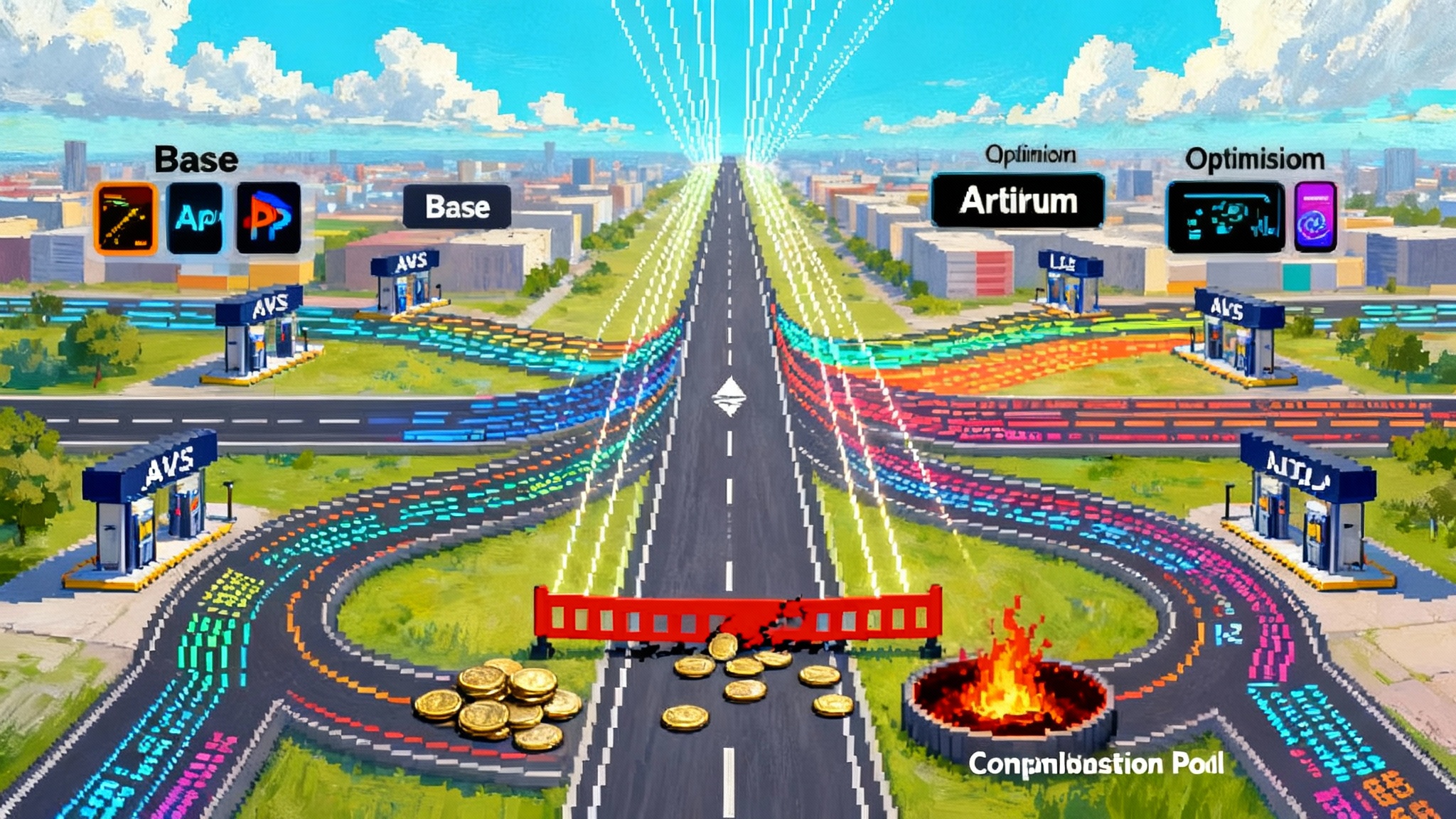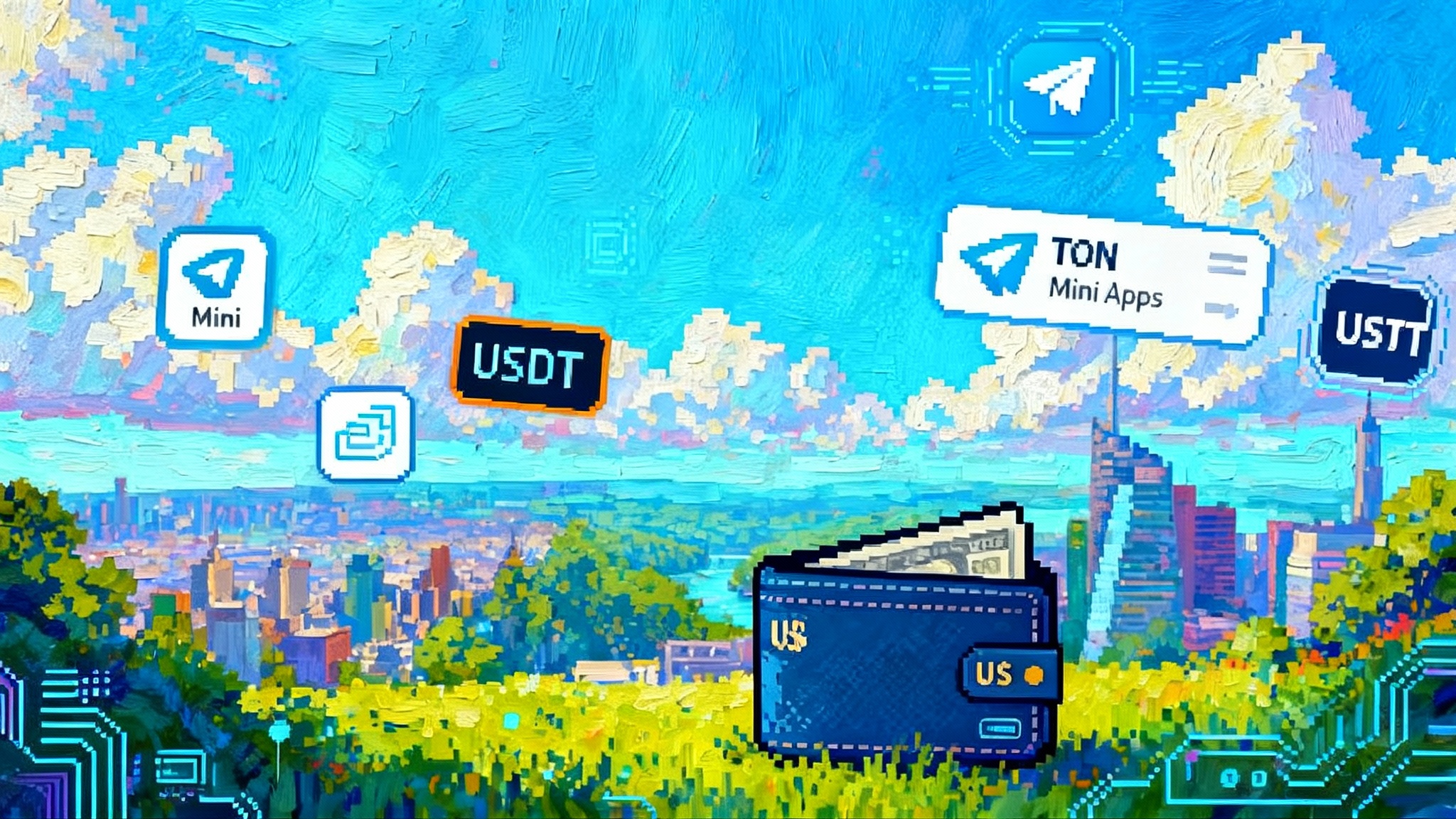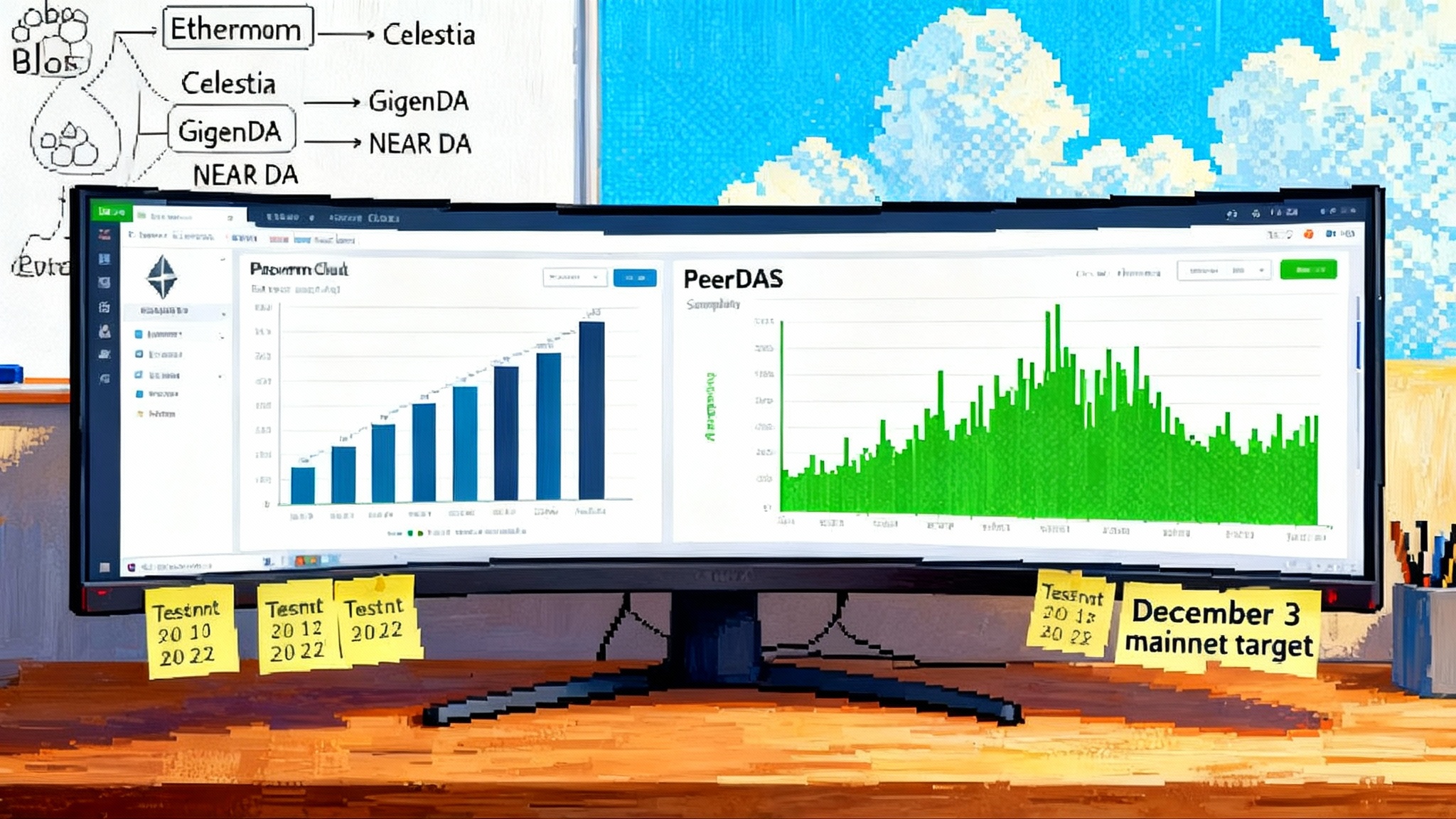Restaking Goes Multichain: Slashing Meets L2 Reality
EigenLayer turned on onchain slashing in April 2025 and debuted multichain AVS support in July. Here is what is actually slashable, how yields will reprice as risk turns real, and the playbook builders, operators, and restakers need now.

The switch flips: penalties and portability arrive
The restaking story just moved from theory to production. On April 17, 2025, EigenLayer’s Protocol Council enabled onchain slashing on mainnet, turning soft promises into enforceable penalties for operators that break their commitments. The team announced the activation the same day in the project’s forum, with launch partners like LayerZero and Infura’s Decentralized Infrastructure Network already wiring slashing into their services. See the confirmation in the project’s post, Slashing goes live today on mainnet.
Then in late July 2025, Eigen Labs opened the door to the places users actually transact. A new protocol feature called Multi-Chain Verification arrived in public preview on Base’s Sepolia testnet, allowing Actively Validated Services to run on layer 2 networks while keeping their security anchored to Ethereum. In the announcement, Eigen Labs described how stake weights, operator sets, and slashing outcomes sync across chains. Read the preview in EigenCloud goes Multi-Chain on Base. For context on high-throughput L2s, see Polygon Rio hits 5,000 TPS and how L2s go permissionless with BoLD.
Put those two changes together and you get a new operating environment: risk-priced, restaked security that can live on fast rollups. If you are building an AVS, running an operator, or delegating as a restaker, the implications are concrete and immediate.
What actually gets slashed
Slashing is no longer a diagram in a deck. It is executable code, with specific knobs and boundaries. Here is what is on the line today:
- The unit of risk is the operator’s Unique Stake allocated to an AVS’s operator set. An AVS can only slash the stake an operator explicitly allocates to that AVS. This confines blast radius and makes position sizing possible.
- What an AVS may slash is the delegated stake associated with the strategies that operator opted into for that AVS. In practice that means ERC-20 restaked assets such as liquid staking tokens can be reduced. Native ETH behaves differently, explained below.
- Where slashed funds go depends on how the AVS configured its operator set. In the baseline case, slashed ERC-20 funds are burned. With redistributable operator sets, slashed ERC-20 funds can be redirected to a specified recipient, for example to compensate users after a failed commitment. Redistributable slashing is opt-in and scoped to that AVS.
- Native ETH has a special path. When natively restaked ETH is slashed, the funds become permanently inaccessible by being locked inside EigenPods rather than redistributed. This preserves accounting and avoids complex beacon chain flows. It also means operators who restake natively must treat slash risk as an irrecoverable loss.
- The EIGEN token does not participate in redistributable slashing at launch and follows separate rules related to intersubjective faults. Treat it as non-redistributable for risk budgeting until explicit support is announced.
The upshot: ERC-20 restaked assets in an AVS with redistributable slashing can directly make harmed parties whole, while native ETH takes a one-way trip to the penalty box if a slash occurs.
Who pushes the red button
Slashing is governed by the AVS, not by a centralized committee. The AVS defines the conditions, publishes them in contracts, and calls the function that initiates a slash. Best practice is to base slashing on onchain-checkable, objectively attributable faults. Think of facts any observer can verify from data:
- A bridge committee signs an invalid block header from a source chain.
- An oracle rounds a price outside a published tolerance and posts it onchain.
- A data availability service fails a proof of custody check for a specific shard, a concern that grows as PeerDAS and blob fee wars reshape costs.
Subjective judgments like “node was slow” or “downtime felt excessive” are much harder to model and open the door to governance risk. If you want good operators and large restakers to opt in, keep slashing tied to crisp proofs and transparent delays.
Time matters: delays, challenges, and withdrawals
Two timers drive the risk engine:
- Challenge periods and timelocks around slashing give honest participants time to surface fraud proofs. If you run an AVS, make these timers long enough for practical review but short enough to be credible as a deterrent.
- Withdrawal escrows in EigenLayer create a delay between requesting withdrawal and receiving funds. That window is the safety margin that lets a pending slash catch up. Restakers should know their assets are exposed to AVS risk during the escrow window.
Design your playbook around those clocks. Model the worst case where a slash lands just as you start a withdrawal.
How yields reprice when risk gets real
Before April 2025, many AVS rewards were priced like promotional points. With slashing live, the market will value restaking like a risk asset. A simple way to think about it:
AVS yield to operators and their delegators must at least cover the expected loss from slashing plus a risk premium for tail scenarios, on top of the opportunity cost of capital and operations.
A concrete example:
- An AVS pays 8 percent annualized to operators on allocated stake.
- Based on historical data and fault models, the operator estimates a one in 200 year event that would slash 40 percent of the AVS-allocated stake, and a one in 20 year event that would slash 5 percent. Converting that to an annual expected loss gives roughly 0.25 percent from tail plus 0.25 percent from moderate events for a 0.5 percent expected annual loss.
- Add a risk premium of 3 percent for uncertainty and fat tails, plus 1 percent for operations and capital cost. You arrive at a fair compensation of around 4.5 percent above the base staking yield. With an 8 percent AVS reward, you have roughly 3.5 percent of margin. If a real incident hits and realized losses exceed the model, the market will demand a higher premium and AVS rewards will need to step up.
This is why slashing clarity is not a paperwork chore. If the rules are provable and narrow, operators can quote tighter premiums and AVSs can pay less for stronger security.
Risk compartments are a feature, not a bug
Operator sets and Unique Stake make restaking look less like a single lever and more like a portfolio. An operator can allocate a slice of stake to a data availability service, another slice to an oracle, and a small slice to a fresh bridge with higher risk. A slash in the bridge compartment does not pull funds from the other compartments because each allocation is fenced. That is the mechanism that enables actual risk pricing instead of all-or-nothing participation.
For restakers delegating to operators, the same principle applies. Ask your operator how they cap allocations per AVS, and how they diversify across independent fault domains. If an operator cannot answer that in plain language, you are not being paid to take unknowable risk.
Multichain changes where risk lives
With Multi-Chain Verification, AVSs can meet users on fast and low-cost networks without abandoning Ethereum’s shared security. Stake weights, operator membership, and slash outcomes can be synced across supported chains. That removes the pressure to deploy fragile bespoke committees on each rollup.
This also introduces a new class of design choices:
- Where to execute versus where to verify. Many AVSs will do heavy compute or data work offchain or on an L2, and post lean proofs to a manager contract that connects back to EigenLayer. Choose the verification chain and finalize latency to match your app’s blast radius. A price oracle can tolerate a small delay. A cross-chain bridge needs stronger finality assumptions and longer challenge periods.
- How to handle chain halts or reorgs. If an L2 pauses, you need a documented failover. That might mean freezing updates, falling back to Ethereum mainnet during turbulence. Spell it out before you onboard users.
- How to propagate slashes. In a multi-chain setup, a slash triggered on one chain needs to be reflected everywhere. Your runbooks must assume that propagation is not instantaneous and plan for short intervals where views differ.
The preview launched on Base’s Sepolia testnet in July with mainnet support targeted for the third quarter of 2025. That roadmap is what will push risk-priced restaked security into live L2 environments over the coming months.
Builders: a practical pre-incident checklist
You will not get a second chance to be clear. Use this list to ship like a professional infrastructure provider.
- Publish objective slashing conditions
- Tie slashing to data anyone can verify. Favor signature checks, membership proofs, and arithmetic bounds over fuzzy uptime targets.
- Include explicit safe harbors for force majeure scenarios such as upstream chain halts.
- Calibrate redistributable slashing
- If user harm is possible, configure redistributable operator sets and designate a redistribution recipient contract that can reimburse affected users.
- Cap the maximum slash per fault type. Express it as a percentage of the operator’s allocation to the AVS, not of their global stake.
- Set transparent timers
- Document challenge periods, notice windows, and any circuit breakers. Publish them in your contracts and docs. Operators will model these to price your risk.
- Stage incidents before they happen
- Run tabletop drills that include a fake slash. Verify who can sign, who can pause, how you message users, and how funds flow if redistribution is used.
- Choose a verification home
- For multichain AVSs, pick a primary verification chain. If you start on an L2, document how you fall back to Ethereum mainnet during turbulence.
- Test your telemetry
- Expose metrics for fault conditions and for expected proofs. Operators should be able to alert on your error rate before a slash is inevitable.
Operators: build a risk desk mindset
You are now a risk manager, not just a node runner.
- Write a risk appetite statement
- Set numeric caps per AVS and per fault domain. Treat bridges, oracles, and data availability as distinct categories. Publish the caps to your delegators.
- Compartmentalize infrastructure
- Run separate keys and client stacks per AVS where feasible. Avoid shared single points of failure across compartments.
- Price using expected loss plus premium
- For each AVS, estimate expected annual loss from slashing. Add a margin for tail risk. Refuse to opt in if the offered reward does not cover your model with a buffer.
- Plan for liquidity during escrow
- Keep a liquidity cushion so you are not forced to deleverage at the bottom if a slash hits during a withdrawal delay.
- Monitor governance risk
- Track who can change an AVS’s slashing logic and how fast. If an admin key can tighten rules overnight, demand a higher premium or walk away.
Restakers: choose like an underwriter
This is not passive yield. You are underwriting AVS behavior via your operator.
- Diversify across operators with clear, public allocation policies. Avoid operators that chase every new AVS with no stated caps.
- Understand asset-specific risk. Native ETH slashes are irreversible and non-redistributable at present. ERC-20 restakes may be redistributable if the AVS opts in. Do not assume losses will ever be refunded.
- Respect the escrow. Your assets remain at risk for the full withdrawal delay. Time exits around known upgrades and audits, not around price action.
What a first real incident could look like
Imagine a cross-chain oracle that serves an L2. A minor client bug leads a subset of operators to sign a price update that fails a bound check. The AVS’s checker contract detects the violation, posts the proof, and starts the timelock. Operators dispute, but the evidence is clear. After the delay, the AVS calls slash for 10 percent of the affected operator allocations. Because the AVS uses a redistributable operator set, the slashed ERC-20 funds are sent directly to a reimbursement contract that makes users whole. Native ETH held by operators in that set, if any, is locked in EigenPods and cannot be redistributed.
Here is what happens next almost every time:
- The AVS raises rewards for a period to rebuild operator confidence.
- Operators tighten their caps or step away if the incident revealed a weak control surface.
- Stakers reshuffle delegations toward operators with clearer risk disclosures.
- Competing AVSs with stronger objective proofs and better timers take market share.
Incidents, handled well, will become part of how the market learns to price risk.
Three numbers to watch as L2 production ramps
- Slashable allocation per AVS. Ask for the operator’s cap on your AVS as a percent of their total restaked assets.
- Realized slash rate. Track cumulative slashes as a percent of total stake served by the AVS over time. Numbers beat marketing.
- Reward coverage ratio. AVS reward minus modeled expected loss and operating cost. If the ratio is thin or negative, expect churn.
The bottom line
April made slashing enforceable. July made AVSs portable. Together they set the stage for restaked security to meet users at L2 speed without giving up L1 trust. The winners will be the teams that turn these mechanics into clear contracts, fair prices, and disciplined operations. If you are building, publish objective rules, tune redistributable slashing, and rehearse the bad day now. If you run operators, size positions like a portfolio manager and demand rewards that match modeled loss. If you restake, choose partners who talk plainly about caps, timers, and governance. The next headlines will not be about features. They will be about how well your controls worked when the first real slash hit. That is the moment risk-priced security becomes more than a slogan and turns into a reliable part of the stack.








